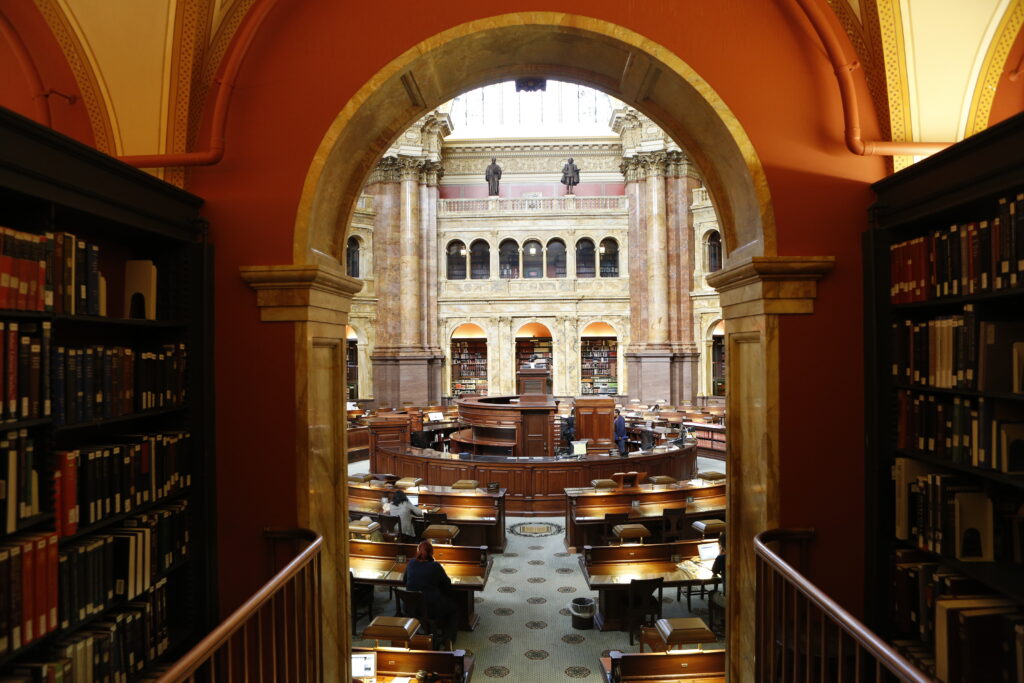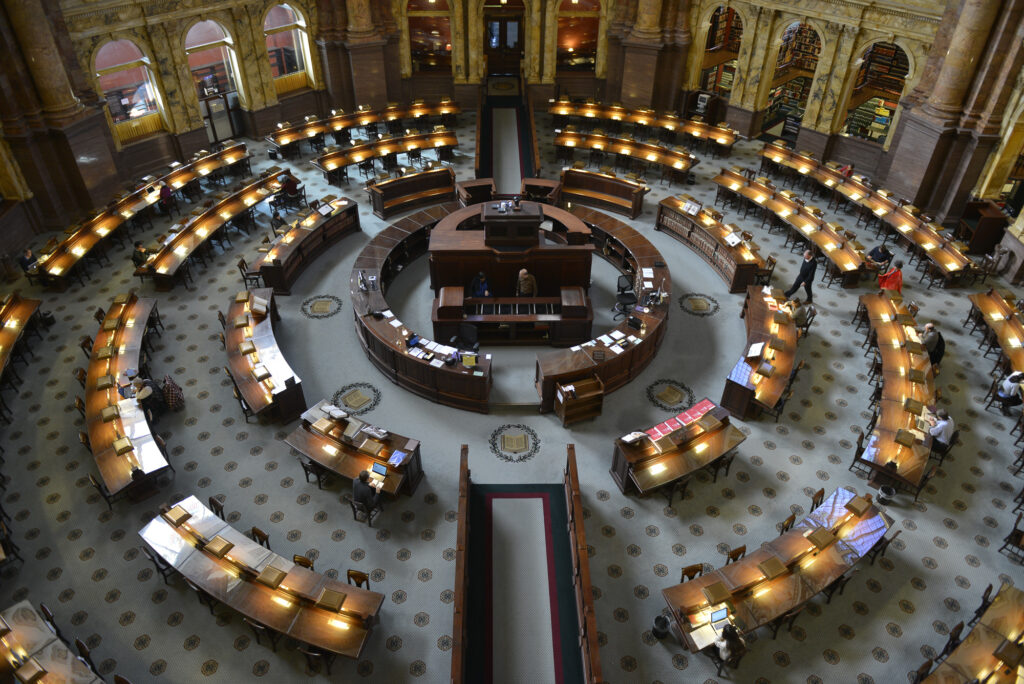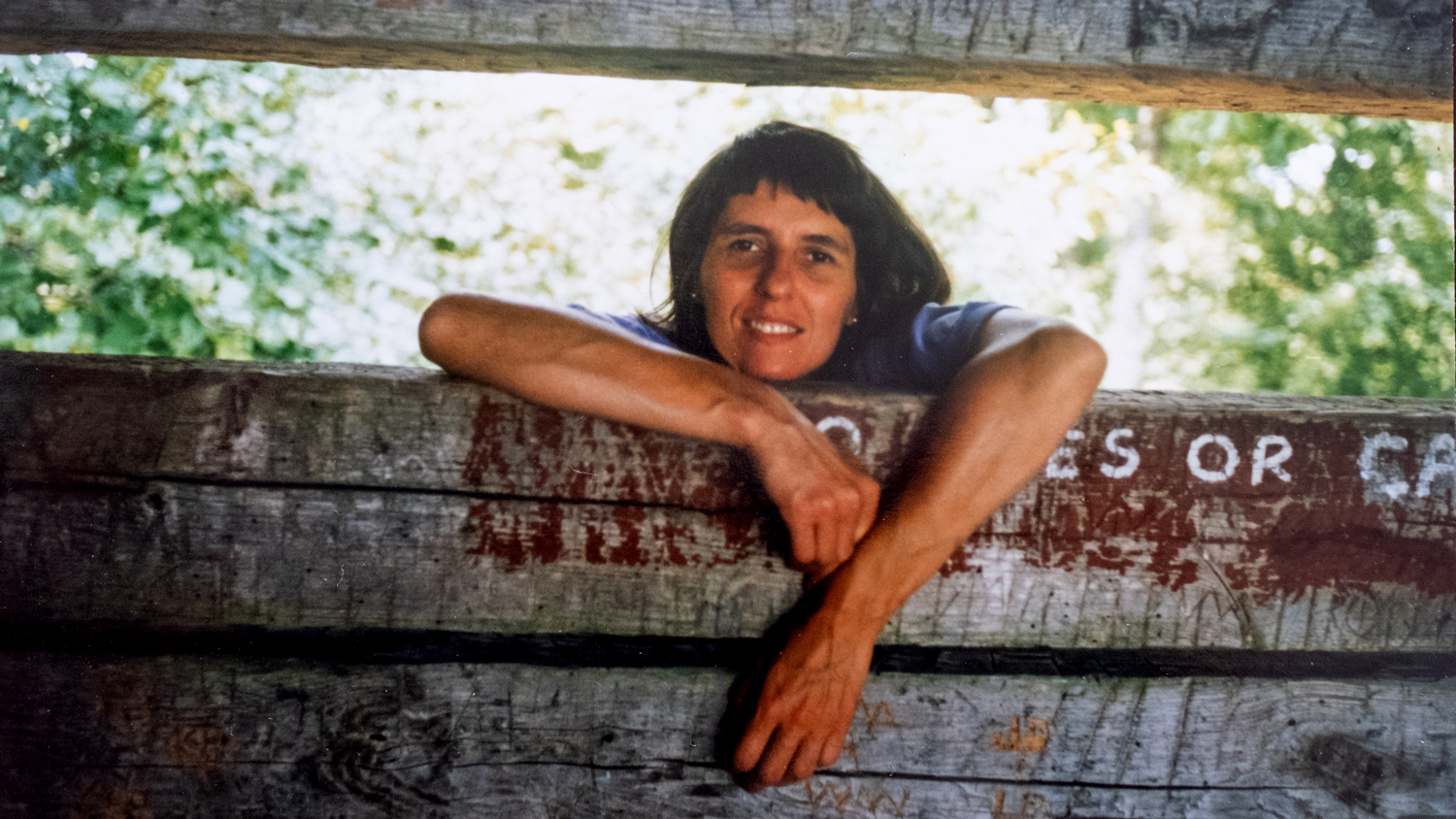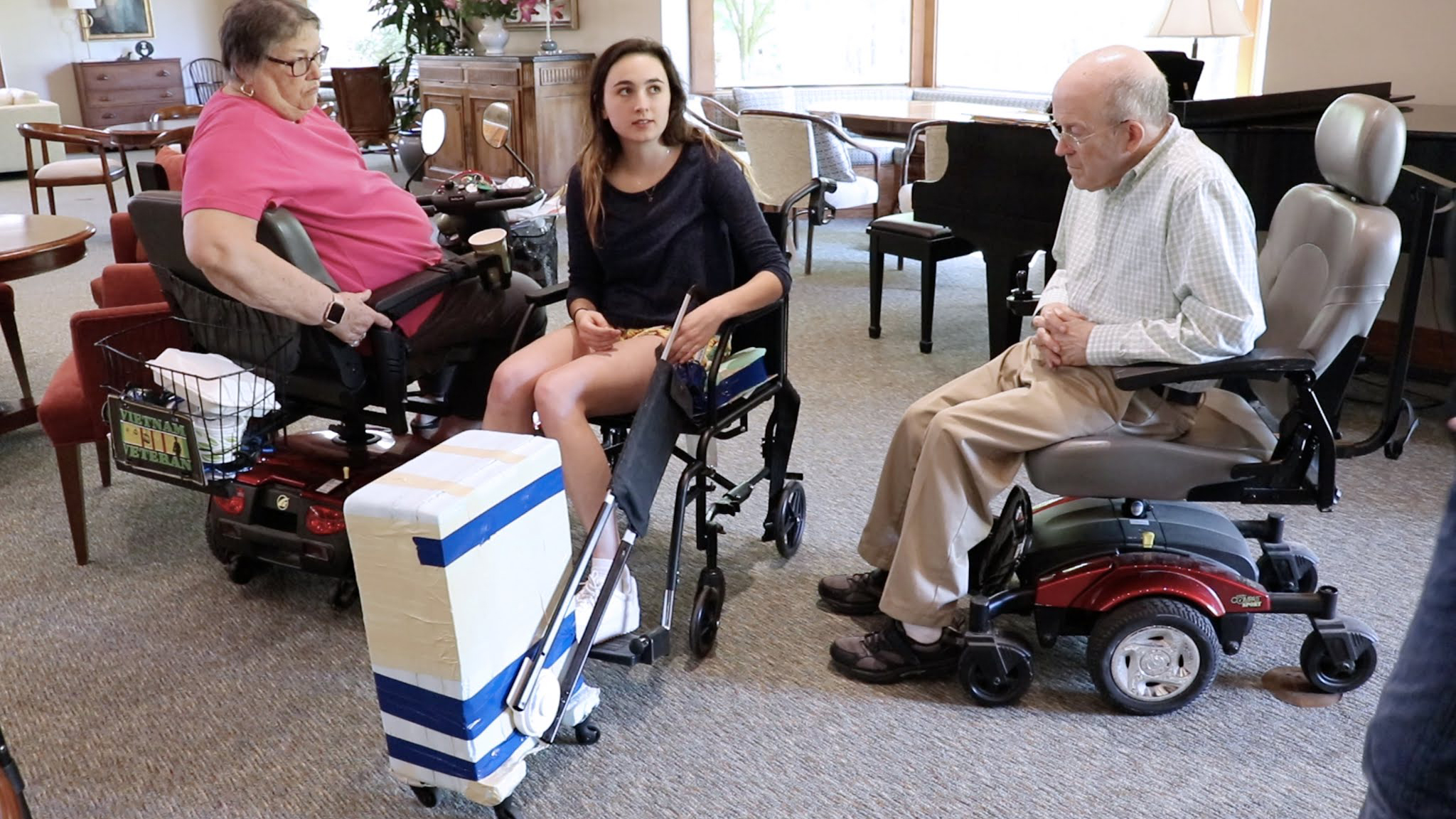Where Design and Culture Collide

In 2017, one of the greatest challenges in the Library of Congress – the largest library in America and one of the largest in the world – isn’t only handling, cataloging, and protecting some of the most important resources in America, it’s also making those resources accessible to both legislators and the general populace. For College of Design alumni Natalie Buda-Smith, Griffin Friedman, and David Rice, tackling that challenge often involves applying design thinking to optimize the Library’s internal processes.

The Library houses some 100 million sources of information, but not all of it can be viewed online. A majority of that data (about 20 petabytes) is archived for the preservation of America’s cultural history. Some of it is facilitated through the Law Library and Congress.gov as a resource for the Congressional Research Service – one of the Library’s primary functions which provides information and analysis to current members of the U.S. Congress. But on LOC.gov, one of the Library’s main digital projects, over 18 million sources of information are also digitized and made available to the public in online collections.
Buda-Smith (’94 MGD) says digitizing information and making it available as a “product” to the public is a process that’s so complex it can actually be diagrammed. “We have to come up with a design for a product so that someone can search for it and find it.”
For a designer, the process of research and digitization can be a large challenge to tackle. “When you’re trying to organize [information], and you start a project and start digging, all of a sudden you realize you’re at the very top of a pyramid of all this amazing data,” Freidman (’10 BGD) explains. “How do you expose that to everybody?”
It’s a question Buda-Smith and Friedman work to answer as part of the User Experience Team, which for fifteen years has been advising the Library on how to improve the way that “pyramid” of data is presented, both internally and to the public. It’s a unique opportunity to compare philosophical differences on the accessibility and communication of some of the most critical pieces of American history. The emphasis on design thinking in the College of Design’s curriculum has been invaluable to their collaborative process with coworkers.

“As a designer, you’re able to remove yourself from what you’re doing. The critique teaches you that. You understand that your end result is not about your point of view. It’s about what’s the best design,” Buda-Smith explains. “Librarians approach information a specific way [that] has to be authoritative and archived. So they’re not taught to be as iterative. But we make it work. If you can critically think and critically create and understand how to collaborate and work with people, it can apply to everything. NC State gave us that skill, which was phenomenal.”
The process of not only learning how to apply design thinking to practice, but also applying it in interdisciplinary courses and studios, is an experience that has proven to be invaluable. “Most of the people I work with here aren’t designers, they’re developers, stakeholders, or analysts from the Congressional Research Service,” says Friedman. “And the experience of taking those other classes prepared me to communicate with them [in a way] that can actually get them to something.”
Another major facet of the Library of Congress is the Copyright Office, where David Rice (’92 MGD) works with branding and communications. He also works with Buda-Smith and Friedman on the Copyright.gov site (another of the User Experience Team’s major digital projects), which is the starting point for research on copyright requests and current copyright holdings.
“A lot of materials that we create are for people who are creators in the industry, whether you’re a filmmaker or a musician, photographer,” Rice explains. “We really encourage them to register and protect their work. So a lot of the kind of materials we do are directed specifically towards creators.”

Rice says his biggest takeaway from his education at the College has been the ideation process. “It taught us how to draw and conceptualize your ideas very quickly so that everyone could understand what’s happening,” he says. “And now that I work here, sometimes I’m asked to come in and be part of a group to help listen to what’s happening […] to draw it out on a whiteboard or a flip chart and get people on the same page in terms of thinking, even if it’s not a specific design problem.”
Providing a more streamlined process for one of the oldest and most respected institutions is a job that is not only engaging, but also a source of passion and pride. “There are a lot of historical papers online [where] you can search for phrases, and it will pull up the actual page and show you where that phrase is on that page,” Buda-Smith explains. “It’s so meaningful to know that you’re a part of [things like] that so that the public has access to it.”
In a place where you can learn about almost anything, it’s an endless source of culture and creativity that can come in the form of history, art, music, and much more. “If I need to, I can go over to a reading room and pull up [something like] Russian Constructivist posters. That’s inspiring from a design perspective,” Friedman shares. “And then musicians come and perform. The other day over my lunch break I got to listen to a Cajun musician. That kind of stuff keeps you inspired.”
Buda-Smith, Friedman, and Rice cite a variety of professors and experiences that impacted them during their time at the College, including an exhibition design studio by Kathleen Meaney and a Martha Scotford course exploring influential women in graphic design history. For Rice, perhaps his most influential experience at the College was the simple act of designing on an index card in Austin Lowrey’s studio – an exercise he found useful in practice later in his career.
“Usually there was a theme or a specific concept that we had to communicate on a 3×5 index card,” Rice recalls. “It was just a way to put an idea on paper without being invested in it. It didn’t have to be something that would actually happen. Something as simple as that, an exercise in getting ideas out, was very helpful.”
And if they could provide one piece of advice for current and future students?
“Take as many opportunities outside of classes as you can,” says Friedman, who during his time at the College was also a graphic designer for CAM Raleigh and the director of the Fish Market Student Gallery. “Learn skills that are ancillary to what you’re thinking you’ll be doing.”
It’s advice they put into practice daily in a place so full of history, where every day is a new learning opportunity.
- Categories:


